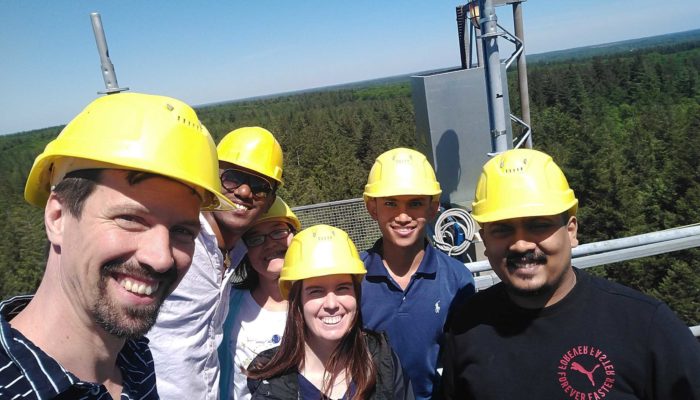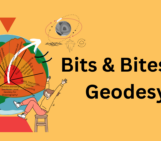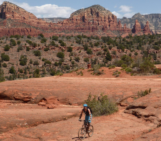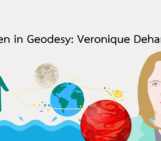
It’s time to introduce a new member of the Geodesy Division Team: Roelof Rietbroek. You might remember Roelof from some years ago when he was the Geodesy ECS Representative and then later also became the Union ECS Representative. Now he has started to take over a new role as the deputy president within the Geodesy Division. We asked him a few questions so you can get to know him better.
 What is your position within the EGU and/or the Geodesy Division?
What is your position within the EGU and/or the Geodesy Division?
Since the 2021 General Assembly (April 2021), I’m assisting the Geodesy Division as the deputy president. Usually, the approval of the division team takes place in person during the division business meeting, and I missed being able to reach out to the community face to face.
What are your responsibilities within the Division?
In contrast to the division presidents, deputies are not elected at the EGU level, and the responsibilities are therefore not formally written in stone. That being said, I see several responsibilities in my role of deputy. I’m happy to act as a sparring partner for the division president Annette Eicker, to discuss and plan the geodesy programme for the upcoming general assembly. Furthermore, within the division team I want to contribute to developing strategies and activities (e.g. outreach through social media) which promote geodesy beyond the community itself.
How was your first EGU GA as Division Deputy President?
I guess my experience was similar to many participants. I enjoyed the meeting, and I’m quite happy that a large part of this (and the future) meeting is now online and accessible to a global audience. However, I did feel that working from home compromised my usual networking experience.
What was your motivation to say yes, when Annette asked you to be the new Deputy President?
My previous experience as the EGU’s early career scientists representative showed me the inner workings of the EGU and the highly motivated team. This really left me with a feeling that I wanted to be involved in the future too, in one way or the other. Accepting this role therefore aligned quite well with this earlier sentiment.
What is the most exciting part of this job for you?
I like that this is not just about the division catering to geodesists, but at a higher level, about embedding the field within the geosciences as a whole, and about making us more open and accessible.
Give us a quick overview of your professional career so far!
Admittedly, my Masters was not on geodesy but on Aerospace Engineering at Delft University of Technology. There, I figured out that my passion lies with observing and understanding the Earth system. I would claim that my early fascination for the Gravity Recovery and Climate Experiment led me to move to Germany and pursue a PhD in geodesy. Ever since, I’ve been using geodetic techniques, such as GRACE, data from GNSS stations, radar altimetry, to study the water cycle, sea level and surface loading problems. Since 2020, I’m working as an assistant professor at the University of Twente in the Netherlands, more specifically, in the Department of Water Resources of the Faculty of Geo-Information Science and Earth Observation.
Currently, what are your research topics?
I’m a big fan of joint inversion techniques, combining techniques such as satellite gravimetry and radar altimetry from geodesy. So I’m using those to learn more about the sea level and the water cycle, and the surface loading it induces. I like keeping one foot in the ocean and keeping the other one on land.
You have been the ECS Union Representative in the past. How was this experience?
That was a great experience, it really showed me to look outside my science bubble. As the union representative you are invited to attend council level meetings so you meet all division presidents, and get to learn the inner workings of the EGU. Working with the division ECS representatives is quite energizing as well. Because they come from varying disciplines it forces everyone to think at a higher level to find common ground. The result is that everyone is contributing with valuable activities, such as short courses, which are targeting a broader audience and add a new dimension to the general assemblies.
Are you a coffee or tea person?
Did you just say coffee?
Where are you going for your first holiday after the pandemic is over?
Over the years, I’ve become more appreciative to enjoying the regions directly around me, so I’m happy with a camping trip nearby. We only recently moved to the Twente region, so there is still a lot of local gems here to explore.
Do you have a favourite place in Vienna?
I don’t keep a ranking but my favourite places all involve food and drinks for some reason. I remember a great family owned restaurant Osteria Stradina, but it has closed since a few years unfortunately ;(
We hope that you have enjoyed learning more about the new deputy president of the Geodesy division. Within the coming weeks, you will have the chance to get to know also the new Science Officers of the Geodesy division.




